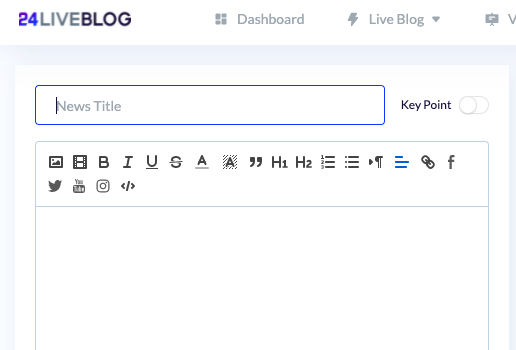Live blogs
How to set up a live blog
24 Live Blog is the platform we use to create blogs. A live blog sounds a bit intimidating but it is quite simple! See the process below:
- To gain access, you’ll need to ask your manager, so that you can be added to the platform.
- Under dashboard, click “create event” and follow the step-by-step process.
- Once your event is created, you will see it on the dashboard. You can then click “add news” and start populating your blog with updates (remember to add internal links and as much multimedia as possible to keep your updates interesting). Once you feel it’s bulked up, you can move it over to WordPress.
- Please DO NOT click “key point” in the top right hand corner for any blog update.

- To link your blog to WordPress, click “embed” and copy the iFrame code as seen below:


- Add a new post in WordPress, set up a Custom HTML block and paste your iFrame code in there. Also remember to adjust the code’s height to 3000 so that it can translate over in an aesthetically pleasing way. When you click “preview” your blog should load.
- Add a headline for your blog, an excerpt, get the URL right, add a featured image and try to optimise for SEO. Once your post is set up and the blog is pulling through from 24 Live Blog, you’re in the clear to publish. Feel free to ask your manager to give it an extra pair of eyes before going live – especially if it’s your first one.
When should you set up a live blog?
Live blogging stays true to its name – providing your readers with rolling updates of a live event. This could be the State of the Nation Address (Sona), Black Friday festivities, an important soccer match, a celebrity wedding or even funeral. This way, you readers can stay up to date as things take place minute-by-minute or even second-by-second.
However, don’t think that a live blog should only be around as long as an event is live. In this day and age, especially with the addition of social media, it’s highly unlikely that there would be a lack of reaction or a ”part 2”, so to speak. So if you created a live blog for a celebrity funeral, for instance, don’t shut down the blog simply because the funeral ended. Work with what is left over and that is social media reaction, celebrity reaction after the fact and plans or happenings thereafter.
